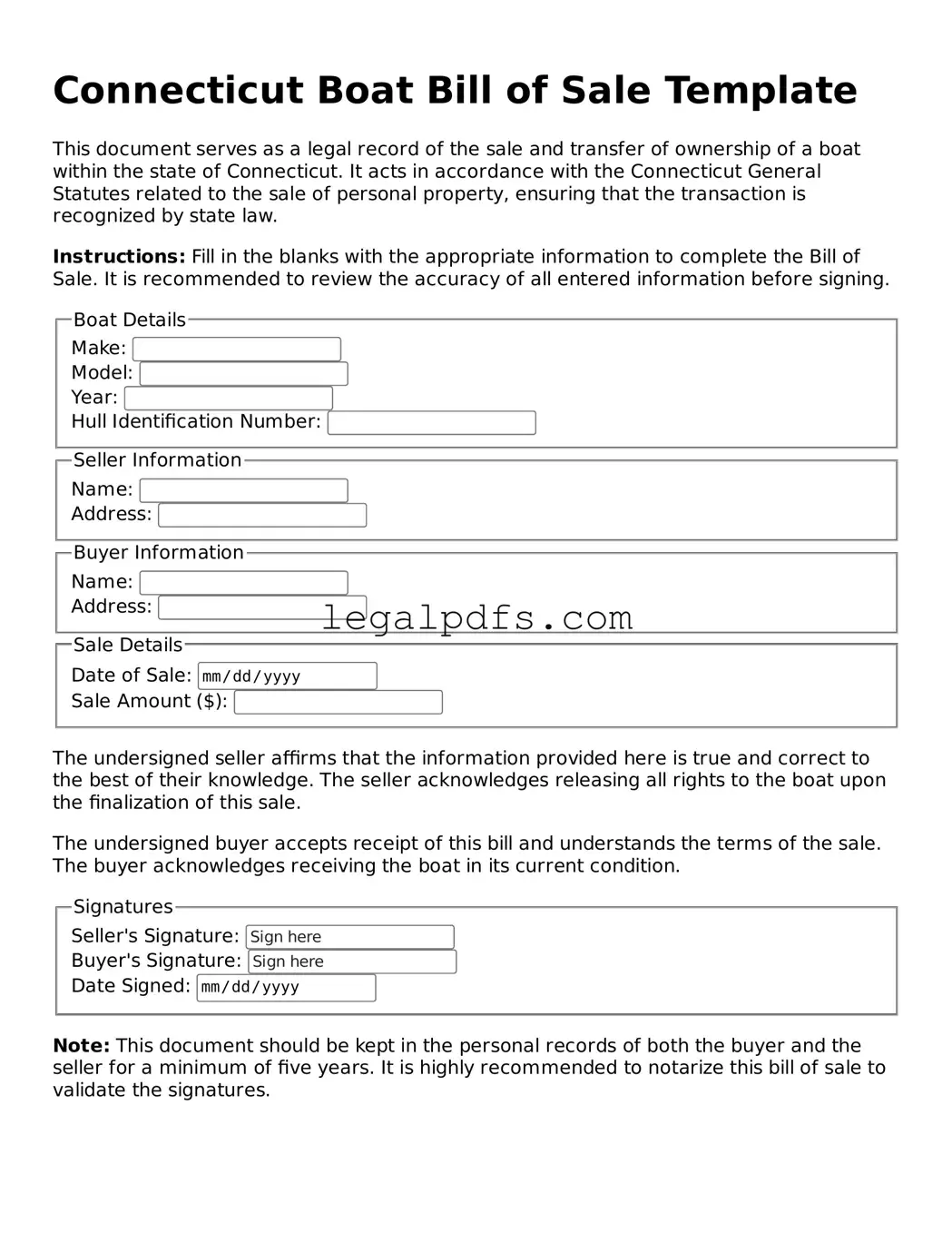What is a Connecticut Boat Bill of Sale?
A Connecticut Boat Bill of Sale is a legal document that records the sale and transfer of ownership of a boat from the seller to the buyer in the state of Connecticut. It serves as a receipt for the transaction and provides proof of the sale, including details such as the date, purchase price, and information about the boat and parties involved.
Is a Connecticut Boat Bill of Sale required for the registration of a boat?
Yes, in Connecticut, a Boat Bill of Sale is typically required for the registration of a boat. It acts as a crucial piece of evidence confirming the transfer of ownership, which is a necessary step in the registration process.
What information is included in a Connecticut Boat Bill of Sale?
A Connecticut Boat Bill of Sale includes essential information such as the make, model, and year of the boat; the Hull Identification Number (HIN); the sale price; and the names and addresses of both the seller and the buyer. It may also detail any warranties or agreements related to the sale.
Do both the buyer and the seller need to sign the Connecticut Boat Bill of Sale?
Yes, it is important that both the buyer and the seller sign the Connecticut Boat Bill of Sale. Their signatures officially document the agreement and transfer of ownership, providing legal protection and clarity for both parties.
Can a Connecticut Boat Bill of Sale be used for transactions of boats from another state?
While the Connecticut Boat Bill of Sale is specifically designed for transactions within Connecticut, it may serve as proof of a transaction for a boat purchased from another state. However, additional documentation may be required to fulfill registration requirements in Connecticut for boats from other states.
Does the Connecticut Boat Bill of Sale need to be notarized?
Notarization is not typically required for a Connecticut Boat Bill of Sale. However, getting the document notarized can add an extra layer of legality and assurance, verifying the authenticity of the signatures on the bill of sale.
How can I obtain a Connecticut Boat Bill of Sale form?
A Connecticut Boat Bill of Sale form can be obtained from the Connecticut Department of Motor Vehicles (DMV) website or at a local DMV office. Additionally, legal forms websites may also offer templates that can be used for this purpose.
What should be done after completing the Connecticut Boat Bill of Sale?
After completing the Connecticut Boat Bill of Sale, the buyer should submit the form along with any other required documents to the Connecticut Department of Motor Vehicles to register the boat. Retaining copies of the bill of sale is important for both the buyer's and seller's records, and for tax reporting purposes.
Is a Bill of Sale enough to prove ownership of a boat in Connecticut?
A Bill of Sale is an important document for proving ownership of a boat in Connecticut, especially at the time of registration. However, the certificate of title or registration document issued by the state ultimately serves as the legal evidence of ownership.
